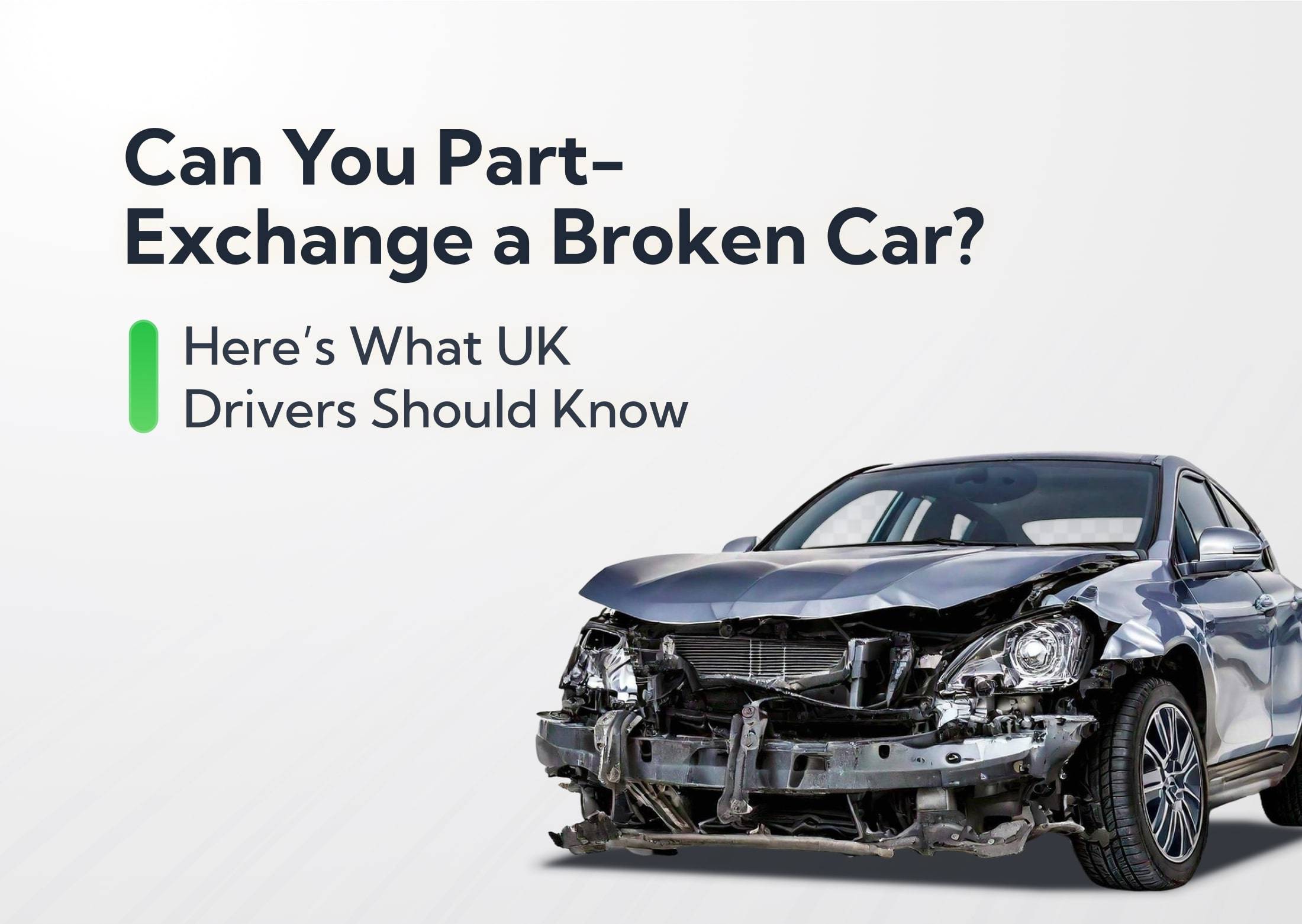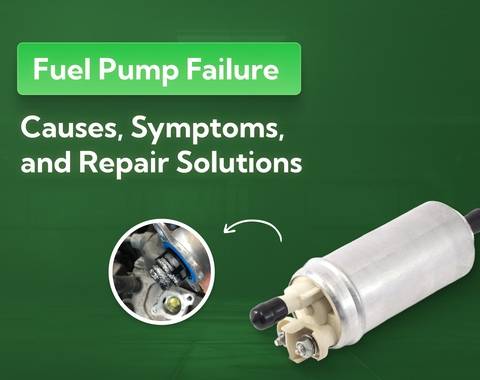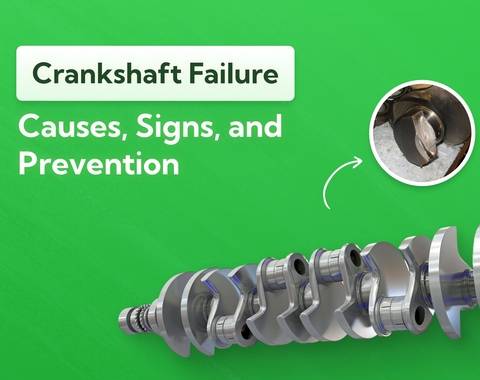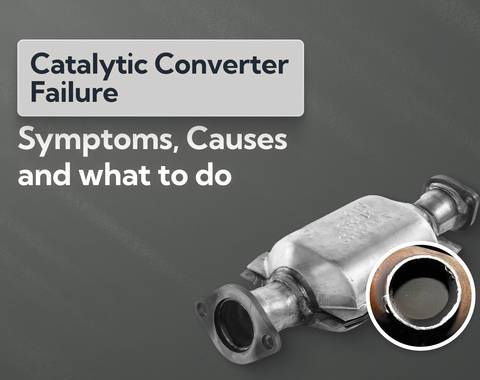Can You Part-Exchange a Broken Car? Here’s What UK Drivers Should Know
From non-runners and MOT failures to accident-damaged vehicles, dealers and online buyers will still make part-exchange offers if your car’s broken. Our guide explains how valuations work, what paperwork you’ll need, and the smartest ways to get the best deal for your next car
Last updated: 2nd October, 2025

Award-winning automotive entrepreneur, tech innovator, and founder of Car.co.uk, NewReg.co.uk & Recycling Lives.

Listen to this story
Yes, many dealerships and car buyers accept broken cars as part-exchange, though the value offered will usually be lower than for a running vehicle.
Thousands of drivers face this situation when their vehicle has mechanical faults, body damage, or simply isn’t running anymore.
The good news is that a broken car can still hold value. Dealerships and buyers look at more than just roadworthiness. They consider age, mileage, make, model, and what the car could be worth after repairs.
In this guide, we explain how part-exchange works with broken or non-functioning cars, what you can expect from dealers, and the alternatives you should weigh up before making a decision.
What's in this article
- 1. What does part-exchange mean?
- 2. Can you part-exchange a broken car?
- 3. How much will you get for a broken car in a part-exchange?
What does part-exchange mean?
A “part-exchange” is when you trade in your current car as part of the payment for a new one. Instead of selling your old vehicle separately, the dealer deducts its value from the price of the car you’re buying.
For example, if the car you want costs £10,000 and the dealer offers £2,000 for your old car, you’ll only need to pay the remaining £8,000.
It’s a convenient way to upgrade without the hassle of a private sale separately, and it ensures your existing car still has value regardless of its condition.
Can you part-exchange a broken car?
As we already said, you can part-exchange a broken car. Dealers accept vehicles with faults, damage, and even ones that no longer run. The difference is in how much they’ll offer.
A car with a major fault won’t fetch the same value as one in good working order, but it still has worth. Dealers may repair and resell it, use it for parts, or send it to auction.
What matters most is transparency. If your car has issues like engine trouble, electrical faults or accident damage, declare them upfront. Hiding problems is what leads to low offers (and possibly the deal falling through once the dealer inspects it).
What the experts say

William Fletcher MBE
How much will you get for a broken car in a part-exchange?
The amount you’ll get depends on several factors: the type of damage, the age and mileage of the car and the demand for your make and model. A newer vehicle with minor issues will still return a fair offer, while an older car with serious faults will be valued closer to scrap.
Factors that affect the offer
The main factors affecting a part-exchange offer for a damaged car are:
- The severity of the damage or fault
- The car’s age, mileage and overall condition
- Market demand for your specific make and model
- Whether repairs are practical or cost-effective for the dealer
If the vehicle is beyond economical repair, the dealer may only offer a figure based on scrap metal prices.
How to get a better valuation
You can increase your part-exchange offer by preparing your car properly (which we’ll talk more about in a moment).
Besides that, there are three main best practices:
- Provide service records, MOT history and receipts for recent work.
- Shop around (two dealers might value the same car differently).
- Consider fixing small issues before the trade-in if the cost is low compared to the potential uplift in value.
If you really want to get the best valuation, the most important thing to do is to be upfront about everything. Trying to hide faults will only make the dealer lose trust in you, which could end up killing the deal altogether.
Common mistakes that lower the price
The main thing to avoid is hiding faults that are easy to find during inspection. Beyond that, arriving unprepared without documents or maintenance history is a critical error (most dealers won’t even take a car without a V5C).
And like we said earlier, smart sellers always get multiple offers. Maybe your first offer is the best one. But you’ll never know unless you take the time to compare multiple dealerships.
Where to part-exchange a broken car in the UK
In the UK, broken vehicles can be part-exchanged either through a dealership or with an online car buyer. The process is similar, but the experience and the offers you receive will feel quite different.
Dealerships vs online car buyers
Selling your broken car to a dealership
Dealerships are the most straightforward option if you already plan to buy your next car from them. You hand over your broken car, and the value is deducted from the price of your replacement vehicle.
While this is convenient, dealerships make conservative offers on cars with faults. They need to factor in the cost of repairs and the uncertainty of resale, which means you’ll walk away with less money than expected.
The trade-off is simplicity; you can complete everything in one place without worrying about logistics.
Selling it to an online car buyer
Online car buyers approach things differently. Many of them (including us) specialise in cars with faults or damage, so they’re set up to handle vehicles that can’t easily be sold on the open market.
All you have to do to sell your damaged car is enter your details online and get a free valuation. If you accept the quote, someone will collect your car from wherever it’s parked.
Because online buyers tap into auctions and salvage networks, the offers sometimes even beat what you’d get from a dealer. For many drivers, this route combines convenience with the possible chance of a stronger price.
Specialist dealers for damaged cars
Not all dealerships treat broken cars the same way. Some specialise in damaged or non-running vehicles, which means they actively seek them out. These kinds of dealers generally have connections to repair networks, salvage auctions and/or parts resellers, so it’s easier for them to turn a profit on cars others reject.
The advantage of working with a specialist dealer is that you’re more likely to get a realistic offer. Instead of seeing your car as a headache, they look at it the same way a real estate investor would look at a fixer-upper. This doesn’t mean you’ll get the same price as a working car, but it does narrow the gap and give you a better deal than a standard dealership.
Can you use scrap yards for part-exchange?
No. Scrap yards don’t usually offer part-exchange deals. Their role is to recycle vehicles for their metal and recover any salvageable parts, not to arrange trades.
If your car has reached the end of its life, a scrap yard is normally the best option. You can sell it outright for parts or for its scrap value, and in many cases, arrange free collection. But unlike dealerships and some online buyers, they won’t offset its value against the price of another vehicle.
TL;DR: If you’re set on part-exchanging, you’ll need to go through a dealer or a specialist buyer instead.
Documents and prep: what you’ll need
Turn up prepared and you’ll get a smoother handover, not to mention a stronger offer. Here’s exactly what to sort before you part-exchange a broken car:
- V5C logbook. Dealers need proof you’re the registered keeper. Bring the full V5C, not just the green slip. If it’s missing, apply for a replacement first (you can’t complete the deal without it).
- Photo ID and proof of address. A passport or driving licence plus a recent utility bill or bank statement covers most checks.
- MOT certificate and history. You don’t need the physical MOT certificate, but you should verify the car’s status before selling it.
- Service history and receipts. Stamped booklets, digital records, and invoices for recent work all help. Evidence of timing belt changes, new tyres, batteries, or brakes can soften the hit from current faults.
- All keys and accessories. Two keys almost always improve the offer. Don’t forget the locking wheel nut, parcel shelf, spare wheel and inflation kit, SD card for sat-nav, radio code, charging cable (for EVs/plug-ins) and the owner’s manual.
- Outstanding finance details. If the car is on PCP/HP, get a written settlement figure from your lender. The dealer can pay it off and deduct the amount from your valuation. Bring the account number and the settlement letter.
- Proof of any insurance/warranty claims. If the car is broken due to an insured event or a known defect, paperwork helps the dealer understand the story and price accordingly.
If you have a private number plate you want to keep, you also have to think about that. To keep a private plate, put it on retention with the DVLA and re-fit the car with the original plates before selling it. Do this before the handover, or you lose the right to use the private plate forever.
How to prep the car, even if it’s broken
Before you bring your car to the dealer, make sure it’s completely cleared out of everything you have.
- Clean it inside and out. A quick wash, hoover, and wipe-down pays back. First impressions matter, even with faults.
- Remove personal data. Unpair phones, delete sat-nav favourites and home addresses, log out of apps, and factory-reset the infotainment if possible. Take toll tags, dash cams, garage remotes, and trackers with you.
- Fix cheap wins. Replace blown bulbs and wiper blades, top up fluids, inflate tyres to the correct pressures, and clear warning messages caused by simple issues (e.g., washer fluid). Don’t throw money at heavy repairs; leave those to the dealer.
- Gather evidence. Note current faults, when they started, and any quotes you’ve had.
- Make access easy. If the car doesn’t run, park it where a recovery truck can easily reach it. Have both keys ready and the handbrake functioning.
And remember to stay legal until handover. If you are driving to the dealer, the car must be insured, taxed, and roadworthy. If it isn’t (which is common with broken cars), you’ll have to arrange collection. After the sale, cancel insurance; DVLA will handle vehicle tax once the keeper change is processed.
Pros and cons of part-exchanging a broken car
The main reason to part-exchange a broken car is that it saves you time and hassle. You don’t need to arrange a private sale, find a buyer willing to take on repairs, or negotiate with scrap dealers. Everything happens in one place and the value of your old vehicle is simply taken off the price of your next one.
The pros of part-exchanging a broken car:
- A quick and convenient way to dispose of a faulty car
- No need to advertise or deal with tyre-kickers
- The car is collected or driven away the same day you get the replacement
- Some value is recovered even if the car isn’t running
On the other hand, you may not get the best price. Dealers will factor in repair costs, their margin, and the risk of resale, which can mean a lower valuation than selling the car directly to a specialist buyer or privately. If maximising cash is your priority, part-exchange might not be the most profitable route.
The cons of part-exchanging a broken car:
- Limited choice if you’re tied to one dealership
- Lower valuations compared with selling privately
- Dealers may reduce their offer after inspection if faults weren’t fully disclosed
- Less flexibility, since you’re committing to buy your next car from the same place
Really, a part-exchange is about ease rather than top money. If you want the simplest way to move on from a broken car and replace it with something better, it works. If you want to squeeze out every last pound, you’ll want to list it privately.
Tips to get the best deal on a part-exchanged car
Getting the best deal on a part-exchanged car really comes down to preparation, honesty and knowing the value of your options. Dealers and online buyers are running a business, but you still have leverage if you approach the process strategically.
Here’s how to maximise your return:
Get multiple offers first.
Never accept the first figure you’re given. Valuations might be similar, but they sometimes vary widely between dealerships, online car buyers and specialist damaged car dealers. Take the time to get at least three quotes before making a decision.
Even if you already know where you want to buy your next car, having other offers in hand gives you negotiating power. If one dealer sees that you’ve been offered more elsewhere, they may raise their bid to win your business.
Be honest about the condition.
It’s tempting to downplay faults, but it always backfires. Dealers will inspect the car and if they find undisclosed issues, they’ll cut the offer on the spot. They’re pros who do this every day, so don’t expect to fool them.
Worse, you risk losing credibility and seeing the deal fall apart entirely. Instead, list the problems upfront and provide paperwork to back up any recent repairs. An honest approach builds trust and usually results in a more stable valuation.
Ask for the breakdown of the offer.
It’s really easy for dealers to reduce their offer or inflate repair costs for their own benefit when you have no idea what they’re actually factoring in. That’s why you never accept the lump-sum figure.
Instead, ask how they arrived at it and get an itemised breakdown. A good dealer should be able to explain how much is being deducted for repairs, how market demand affects the price, and whether there’s flexibility on their side.
When you see the numbers broken down, you’ll know if the valuation is fair. You might also spot areas to push back, such as when the estimated repair costs seem excessive for what the damage or fault is.
What if no one wants to take it?
If dealers and online buyers won’t touch your broken car, we still will. We’re a licensed scrap car buyer, and we’ll take anything, no matter how bad the condition.
Our model is simple. We work with Authorised Treatment Facilities (ATFs) and breaker’s yards across the UK, who use our system to get you instant quotes for your vehicle. Once you pick an ATF, it’s dismantled safely, stripped for usable parts and recycled for its metal.
If it still has useful components, we help you sell your car for parts before taking it to the scrap yard. Those parts are factored into the quote we give you.
Because of this, we can accept cars that others reject:
- Non-runners that can’t be driven.
- MOT failures with repair bills higher than their value.
- Accident-damaged cars that aren’t worth fixing.
- End-of-life vehicles that are only suitable for recycling.
- Complete junk cars that have been off the road for years.
We’ll collect it for free (with same-day and next-day options), handle the paperwork, and make sure it’s disposed of or reused legally and responsibly (with ≥ 95% of your vehicle’s mass recycled). Then, we’ll pay you via secure bank transfer on the spot.
Final thoughts
Part-exchanging your broken car is possible, and it’s the perfect way to replace it with a newer, functional model. You won’t always get the highest price, but you will get convenience, speed, and the certainty of a clean handover.
Dealers, online buyers and specialist damaged-car traders all handle broken cars differently, so it pays to shop around. And if no one offers a deal that makes sense, a scrap car buyer like us can still step in and take the vehicle off your hands safely and legally.
Frequently asked questions
Yes, you can. Most dealerships prefer a valid MOT if the car is more than three years old, because it proves the vehicle is legally roadworthy. But if the car is already broken, the absence of an MOT doesn’t usually make much difference. They know it isn’t in running order.
What it will do is lower the valuation. A car without an MOT signals risk and repair costs to the dealer, so expect them to reduce their offer. If the MOT expired only recently and the car is still drivable, you may get more by renewing it first. If it’s a non-runner or MOT failure, it’s best to be upfront and let the dealer or buyer price it accordingly.
Lots of dealers accept non-runners, but the offer will be comparatively low. A car that can’t move under its own power creates extra costs when it comes to collection, repair, and disposal. Some main dealers will decline entirely, but online buyers and specialist damaged-car dealers step in where standard showrooms won’t.
It depends on the condition of the car and the cost of repairs. If the fault is minor and cheap to fix (like replacing tyres, sorting out warning lights or fitting new wipers), you’ll get back more in valuation than you spend.
But if the car needs a major repair, such as a gearbox replacement or fixing serious accident damage, it rarely makes financial sense. Dealers will factor those costs in anyway, and you’re unlikely to recover what you spend.
In most cases, it’s better to part-exchange the car as it is and let the dealer handle the heavy work.
Usually, yes. Selling privately gives you the chance to set your own price and find a buyer willing to pay more than a dealer would offer. Enthusiasts, DIY mechanics, and breakers might see value in your car that a dealership won’t.
The trade-off is effort. You’ll need to advertise the car, field calls and messages, and deal with time-wasters. You also take on more risk because private buyers can back out, haggle aggressively, or turn out to be scammers.
Only in some cases. If your car is a Category S (structural damage) or Category N (non-structural damage) write-off, some dealers may accept it in part-exchange. These categories mean the car can legally go back on the road if it’s been properly repaired, so there’s still potential resale value.
But not all dealerships are willing to take write-offs, even if repaired. Many prefer to avoid the risk, and those that do accept them offer much lower valuations.
Category A and B write-offs (cars that must be scrapped and never return to the road) cannot be part-exchanged under any circumstances.
The best way is with paperwork. Bring your service history and receipts for recent repairs. If the car has had major work like a new clutch, timing belt or brakes, proof of this makes a dealer more confident in their valuation.
Photos and inspection reports also help if you’ve had the car assessed by a garage. The clearer the record, the fewer questions at appraisal.
If you took out finance, you’ll still owe money until the agreement is cleared. You can still part-exchange the car, but you’ll need to request a settlement figure from your finance provider first. The dealer will then pay off the outstanding balance directly to the lender, and whatever’s left from your car’s valuation goes towards your next purchase.
If the car is worth less than the finance owed, that’s called negative equity. You’ll need to cover the difference yourself, either in cash or by rolling it into the new finance deal, though the latter makes your next car more expensive in the long run.
Yes. Even small scratches, dents, and scuffs can reduce your offer by a few hundred pounds, even though they’re expected on older cars and dealers can fix them cheaply in-house. The cleaner the car looks, the stronger the first impression, so it’s worth giving it a quick tidy-up before an appraisal.
Yes. Always be upfront about faults, even if they seem minor. Dealers will inspect the car, and if they uncover problems you didn’t declare, they’ll lower the offer on the spot. Worse, it can make them reluctant to deal with you at all.
Yes, most dealers and online car buyers now offer instant valuations through their websites. You’ll usually need to enter your registration number, mileage, and some basic details about the car’s condition. The system then generates a guide price, often within seconds.
If you want to see how much your car is worth, get a no-obligation quote that factors in salvageable parts value here.
In many cases, you can complete a part-exchange the same day. If you have all the paperwork ready (V5C, MOT history, service records, and ID), the dealer can inspect it, agree on a value, and take it off your hands immediately when you collect your new car.
If the vehicle is non-running, it may take a little longer to arrange collection, but most dealers and online buyers can still finalise the deal within a few days.
The key is preparation: turn up with the documents in order and be upfront about the car’s condition, and the process is usually quick and straightforward.
Yes. You should keep the car insured until the moment you hand it over, even if it doesn’t drive or is declared off the road (SORN). Standard cover isn’t required for a SORN vehicle, but at the very least, you should consider fire and theft insurance.
Why? Because until the dealer or buyer officially takes ownership, the car is still your responsibility. If it’s stolen, vandalised or damaged while sitting on your driveway, you’ll be the one left paying out of pocket for it.
Keeping some level of cover in place protects you against that risk, drivable or not.
About Car.co.uk

Share on
Latest news & blogs










